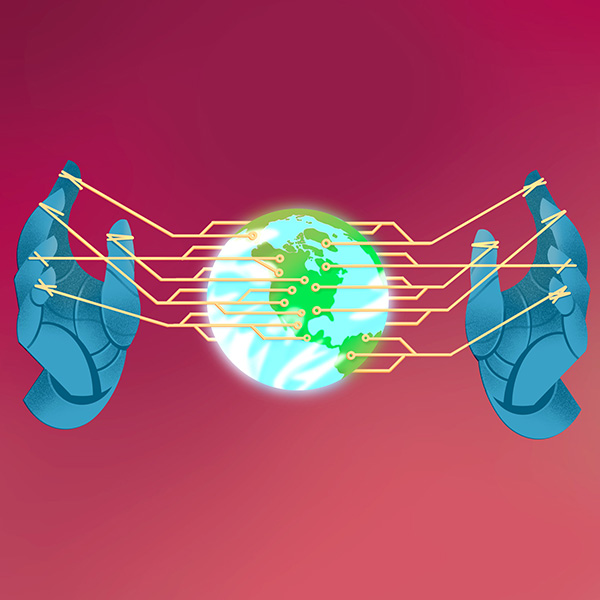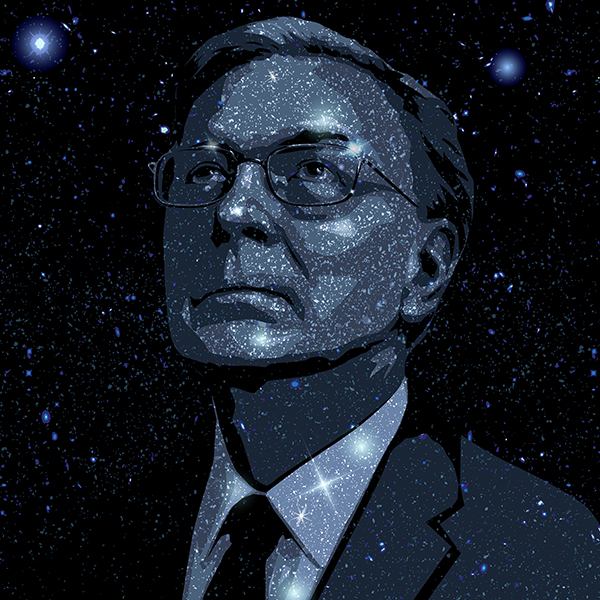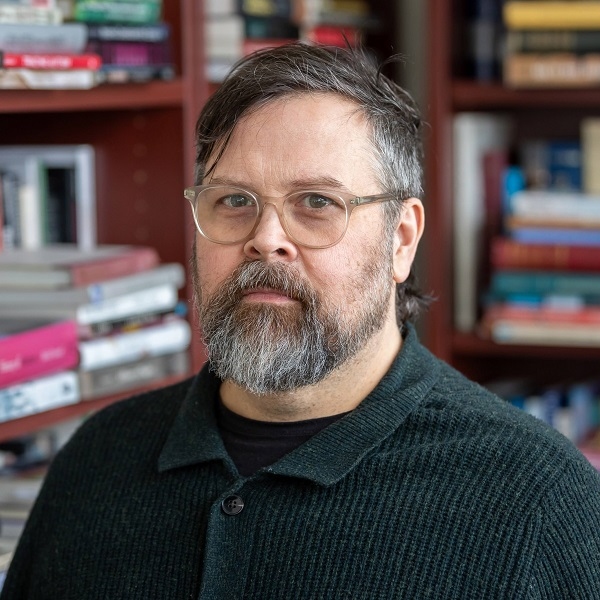As a teenager growing up in Montreal, Leonard Pinchuk came up with a novel solution when his skis wouldn’t fit into the trunk of his car.
He cut them in half, added hinges so they folded, and voilà!
Pinchuk, BSc’76, DSc’05, would go on to apply his inventive streak to medical devices in ground-breaking ways with far-reaching impact. Think tens of millions of patients.
For the most part, he’s done so under the radar. But last month the spotlight shone on Pinchuk in Washington, D.C., where he and four others received the world’s top prize in bioengineering – the 2019 Fritz J. and Dolores H. Russ Prize – for their innovations leading to the widespread adoption of coronary angioplasty or, as it’s now called, PCI (Percutaneous Coronary Intervention).
“I was very delighted and I was very happy that they found the other four co-winners,” says Pinchuk.
“They’re all very important names in cardiology,” adds Pinchuk, noting some of them didn’t know who he was. “The way I look at it is we all know that Neil Armstrong landed on the moon, but we don’t know the names of the people who built the rockets, and the landing vessel that brought him back alive. I’m in the engineering category that provided the tooling and equipment needed to begin interventional cardiology.”
Two of the award recipients, Julio Palmaz and Richard Schatz, invented the stent that became the gold standard for future stents. It was launched on the nylon 12 angioplasty balloon developed by Pinchuk, “the first and only commercially successful balloon,” he says. (When a stent is used to open a blocked artery, a balloon on the tip of the catheter under the stent is inflated, thereby expanding the device and compressing the plaque.)
Pinchuk’s other inventions or co-inventions include a helical stent used on most stent-grafts, the drug-eluting stent TAXUS® (Boston Scientific), a modular stent-graft used to repair abdominal aortic aneurysms, and a micro shunt that is likely to become a game changer in the treatment of glaucoma.
“One of the problems with the early stents is they were very stiff and they couldn’t get to the heart,” Pinchuk says. “So I developed the helical wire stent, which was very malleable. It’s easy to go around curves.” One of the largest medical device companies uses it.
Pinchuk, who has 128 U.S. patents, is a research professor of biomedical engineering at the University of Miami where he earned his PhD. He has founded or incubated 10 companies, and works with other scientists and engineers. “There’s no single device that’s only done by one person,” he says.
While developing the drug-eluting stent TAXUS, Pinchuk had to come up with a new material to put on it so that when the drug coating wore off, the body wouldn’t realize the foreign entity was there.
“This new material came from my basic understanding of organic chemistry, which I can trace all the way back to David Harpp,” Pinchuk says of the chemistry professor at McGill who had taught him that class. “And it was a very logical chemical structure except no one had ever made it for medical use.”
The implantable material, a novel polymer dubbed SIBS that the body doesn’t recognize as foreign, is Pinchuk’s proudest achievement.
While the angioplasty balloon and products related to it have had a huge life-saving impact, Pinchuk says, “My favourite patent is the one on the use of SIBS in medicine because it changed the way we think about how the body interacts with foreign materials.”
The conventional thinking, Pinchuk explains, was that all foreign bodies, or foreign polymers, put into the human body provoke an inflammatory reaction and the body tries to wall it off and move it out of there.
“The SIBS polymer used basic organic chemistry principles with the hypothesis that if you could make a polymer with absolutely no degradation and that is pristine pure, and matches the compliance of tissue, the body shouldn’t even know it’s in there. And this proved to be true. So we changed the nature of how people think of the foreign body reaction, and this enabled the drug-eluding stent, the glaucoma device, and a myriad of new devices that could not have been done before without this invention.”
He later took the polymer and made it into a micro shunt to be used in the eye to stop the progression of glaucoma and prevent vision loss. Santen Pharmaceutical Co., Ltd. acquired Pinchuk’s company, InnFocus, Inc., in 2016. The micro shunt is expected to be available worldwide in 2020, according to Pinchuk.
“We expect it to revolutionize the treatment of glaucoma,” he says.
Pinchuk has “this incredible way of visioning solutions to problems,” says Bruce Lennox, the dean of McGill’s Faculty of Science and a chemist himself.
“He’s identified things that change people’s lives for the better.”
Pinchuk has made life-saving contributions to cardiology and the glaucoma device will provide quality of life benefits, especially to those in underprivileged and underdeveloped environments, says Lennox, who notes many of those afflicted are no longer able to work. He believes Pinchuk should receive more recognition for his contributions. “To me, this is a postage stamp guy”.
Pinchuk sits on McGill’s Faculty of Science’s Advisory Board and has been very supportive of the University and its students, including giving talks to them.
David Harpp, the Tomlinson Chair of Science Education at McGill, describes his former student as a modest man “with nothing to be modest about”.
“He’s a gentle soul. He’s an outstanding person. You would never know that he’s done what he’s done, and he would never really tell you unless you twisted his arm or something,” quips Harpp, who attended an event in San Antonio where Pinchuk received the 2017 BioMed SA Award for Innovation in Healthcare and Bioscience.
Pinchuk names a few things that helped nurture his inventiveness. Like his father, Pinchuk is an artist in his spare time. “We use the right side of our brain as well as the left side,” Pinchuk chuckles. “It’s very important in creativity and invention.”
Working summers as a youth at his father’s large textile printing mill in Montreal helped him understand machinery and processes. “The third part was my knowledge base in organic chemistry from McGill. And putting these three things together enabled me to not only tweak the engineering aspects of a medical device, but also the polymers that they’re made of. And this is very unique.”
Pinchuk doesn’t dwell on his achievements. And there are “probably thousands of engineers and scientists who improved upon [them],” he acknowledges.
“I’m proud that I provided the seed and got all this going, but I don’t dwell on that. I’m on to other things.”
Spoken like a true inventor.


